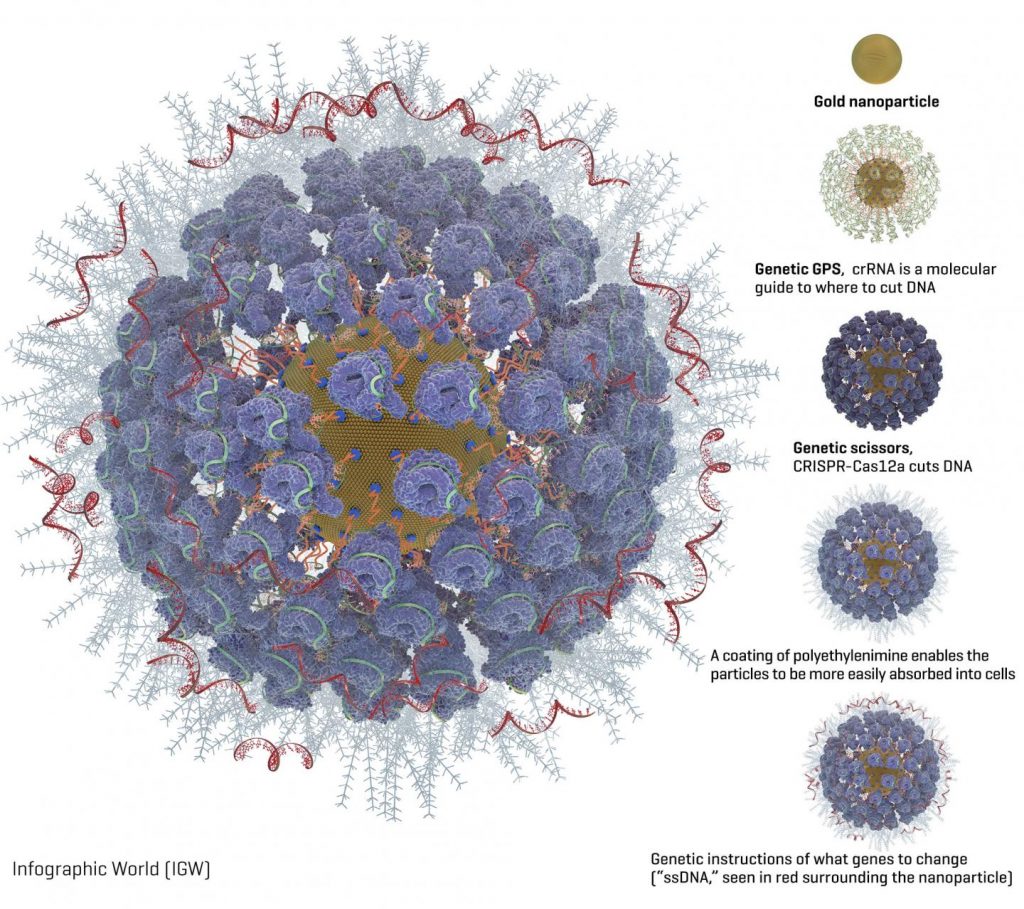When people talk about overpromising (aka hype/hyperbole) and science, they’re usually referring to overexcited marketing collateral and/or a public relations initiative and/or news media coverage. Scientists themselves don’t tend to be identified as one of the sources for hype even when that’s clearly the case. That’s right, scientists are people too and sometimes they get carried away by their enthusiasms as Emily Yoffe notes in her excellent Slate essay, The Medical Revolution; Where are the cures promised by stem cells, gene therapy, and the human genome? From Yoffe’s essay,
Dr. J. William Langston has been researching Parkinson’s disease for 25 years. At one time, it seemed likely he’d have to find another disease to study, because a cure for Parkinson’s looked imminent. In the late 1980s, the field of regenerative medicine seemed poised to make it possible for doctors to put healthy tissue in a damaged brain, reversing the destruction caused by the disease.
Langston was one of many optimists. In 1999, the then-head of the National Institute of Neurological Disorders and Stroke, Dr. Gerald Fischbach, testified before the Senate that with “skill and luck,” Parkinson’s could be cured in five to 10 years. Now Langston, who is 67, doesn’t think he’ll see a Parkinson’s cure in his professional lifetime. He no longer uses “the C word” and acknowledges he and others were naive. [emphasis mine] He understands the anger of patients who, he says, “are getting quite bitter” that they remain ill, long past the time when they thought they would have been restored to health.
The disappointments are so acute in part because the promises have been so big. Over the past two decades, we’ve been told that a new age of molecular medicine—using gene therapy, stem cells, and the knowledge gleaned from unlocking the human genome—would bring us medical miracles. [emphasis mine] Just as antibiotics conquered infectious diseases and vaccines eliminated the scourges of polio and smallpox, the ability to manipulate our cells and genes is supposed to vanquish everything from terrible inherited disorders, such as Huntington’s and cystic fibrosis, to widespread conditions like cancer, diabetes, and heart disease.
Yoffe goes on to outline the problems that researchers encounter when trying to ‘fix’ what’s gone wrong.
Parkinson’s disease was long held out as the model for new knowledge and technologies eradicating illnesses. Instead, it has become the model for its unforeseen consequences. [emphasis mine]
Langston, head of the Parkinson’s Institute and Clinical Center, explains that scientists believed the damage to patients took place in a discrete part of the brain, the substantia nigra. “It was a small target. All we’d have to do was replace the missing cells, do it once, and that would cure the disease,” Langston says. “We were wrong about that. This disease hits many other areas of the brain. You can’t just put transplants here and there. The brain is not a pincushion.”
Disease of all kinds have proven to be infinitely more complex than first realized. Disease is not ’cause and effect’ driven so much as it is a process with an infinite number of potential inputs and any number of potential outcomes. Take for example gene therapy (Note: the human genome project was supposed to yield gene therapies),
In some ways, gene therapy for boys with a deadly immune disorder, X-linked severe combined immune deficiency, also known as “bubble boy” disease, is the miracle made manifest. Inserting good genes into these children has allowed some to live normal lives. Unfortunately, within a few years of treatment, a significant minority have developed leukemia. The gene therapy, it turns out, activated existing cancer-causing genes in these children. This results in what the co-discoverer of the structure of DNA, James Watson, calls “the depressing calculus” of curing an invariably fatal disease—and hoping it doesn’t cause a sometimes-fatal one.
For me, it seems that that the human genome project was akin to taking a clock apart. Looking at the constituent parts and replacing broken ones does not guarantee that you will be able assemble a more efficient working version unless you know how the clock worked in the first place. We still don’t understand the basic parts, the genes, interact with each other, within their environment, or with external inputs.
The state of our ignorance is illustrated by the recent sequencing of the genome of Bishop Desmond Tutu and four Bushmen. Three of the Bushmen had a gene mutation associated with a liver disease that kills people while young. But the Bushmen are all over 80—which means either the variation doesn’t actually cause the disease, or there are other factors protecting the Bushmen.
As for the pressures acting on the scientists themselves,
There are forces, both external and internal, on scientists that almost require them to oversell. Without money, there’s no science. Researchers must constantly convince administrators who control tax dollars, investors, and individual donors that the work they are doing will make a difference. Nancy Wexler says that in order to get funding, “You have to promise cures, that you’ll meet certain milestones within a certain time frame.”
The infomercial-level hype for both gene therapy and stem cells is not just because scientists are trying to convince funders, but because they want to believe. [emphases mine]
Scientific advances as one of Yoffe’s interview subjects points out involve a process dogged with failure and setbacks requiring an attitude of humility laced with patience and practiced over decades before an ‘overnight success’ occurs, if it ever does.
I was reminded of Yoffe’s article after reading a nano food article recently written by Kate Kelland for Reuters,
In a taste of things to come, food scientists say they have cooked up a way of using nanotechnology to make low-fat or fat-free foods just as appetizing and satisfying as their full-fat fellows.
The implications could be significant in combating the spread of health problems such as obesity, diabetes and heart disease.
There are two promising areas of research. First, they are looking at ways to slow digestion,
One thing they might look into is work by scientists at Britain’s Institute of Food Research (IFR), who said last month they had found an unexpected synergy that helped break down fat and might lead to new ways of slowing digestion, and ultimately to creating foods that made consumers feel fuller.
“Much of the fat in processed foods is eaten in the form of emulsions such as soups, yoghurt, ice cream and mayonnaise,” said the IFR’s Peter Wilde. “We are unpicking the mechanisms of digestion used to break them down so we can design fats in a rational way that are digested more slowly.”
The idea is that if digestion is slower, the final section of the intestine called the ileum will be put on its “ileal brake,” sending a signal to the consumer that means they feel full even though they have eaten less fat
This sounds harmless and it’s even possible it’s a good idea but then replacing diseased tissue with healthy tissue, as they tried with Parkinson’s Disease gene therapies, seemed like a good idea too. Just how well is the digestive process understood?
As for the second promising area of research,
Experts see promise in another nano technique which involves encapsulating nutrients in bubble-like structures known as vesicles that can be engineered to break down and release their contents at specific stages in the digestive system.
According to Vic Morris, a nano expert at the IFR, this technique in a larger form, micro-encapsulation, was well established in the food industry. The major difference with nano-encapsulation was that the smaller size might be able to take nutrients further or deliver them to more appropriate places. [emphasis mine]
They’ve been talking about trying to encapsulate and target medicines to more appropriate places and, as far as I’m aware, to no avail. I sense a little overenthusiasm on the experts’ part. Kelland does try to counterbalance this by discussing other issues with nanofood such as secretiveness about the food companies’ research, experts’ concerns over nanoparticles, and public concerns over genetically modified food. Still the allure of ‘all you can eat with no consequences’ is likely to overshadow any journalist’s attempt at balanced reporting with resulting disappointment when somebody realizes it’s all much more complicated than we thought.
Dexter Johnson’s Sept. 22, 2010 posting ( Protein-based Nanotubes Pass Electrical Signals Between Cells) on his Nanoclast blog offers more proof that we still have a lot to learn about basic biological processes,
A few years back, scientists led by Hans-Hermann Gerdes at the University of Bergen noticed that there were nanoscale tubes connecting cells sometimes over significant distances. This discovery launched a field known somewhat by the term in the biological community as the “nanotube field.”
Microbiologists remained somewhat skeptical on what this phenomenon was and weren’t entirely pleased with some explanations offered because they seemed to fall outside “existing biological concepts.”
So let’s start summing up. The team notices nanotubes that connect cells over distances which microbiologists have difficulty accepting as “they [seem] to fall outside existing biological concepts. [emphasis mine] Now the team has published a paper which suggests that electrical signals pass through the nanotubes and that a ‘gap junction’ enables transmission to nonadjacent cells. (Dexter’s description provides more technical detail in an accessible writing style.)
As Dexter notes,
Another key biological question it helps address–or complicate, as the case may be–is the complexity of the human brain. This research makes the brain drastically more complex than originally thought, according to Gerdes. [emphasis mine]
Getting back to where I started, scientists are people too. They have their enthusiasms as well as pressure to get grants and produce results for governments and other investors, not to mention their own egos. And while I’ve focused on the biological and medical sciences in this article, I think that all the sciences yield more questions than answers and that everything is far more complicated and interconnected than we have yet to realize.

